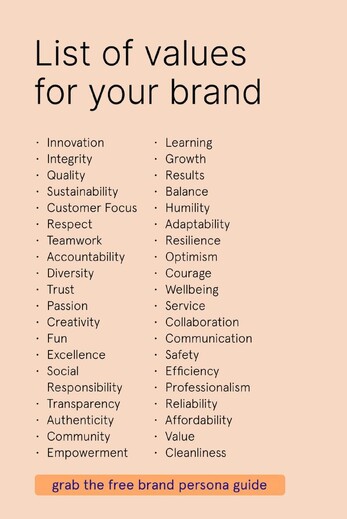How to brief your graphic designer (and actually get what you want)
Our 7-Step Guide to a Successful Design Brief
So, you’ve decided to work with a graphic designer. Congratulations! This is an exciting step for you and your business. Whether you’re investing in professional branding or getting a new website off the ground, one of the most important steps in the process is the design brief.
If you’ve never done one before, this guide is for you.
Here’s our no-stress roadmap to briefing your designer so you can get the most out of your branding investment.
Still choosing your graphic designer? Read our blog on: Essential Questions to Ask A Graphic Designer Before Signing an Agreement.
What is a design brief?
A design brief is a document that gives instructions for any creative project. It can be as simple as an email, or a detailed creative briefing document including design elements, such as a colour palette, fonts, or icons.
When you work with a graphic designer, branding strategist, copywriter, or other business support professional, they will usually work with you to prepare a thorough brief, so they know what they need to achieve.
A clear brief makes the process so much smoother for everyone involved, and it gives you the best chance of ending up with design elements you’ll actually love.
Here’s what makes a successful graphic design brief
1. Start with your business goals
Before you even get into fonts and colours, take a step back. The most effective designs are strategic, meaning they solve a problem or move you toward a goal.
Ask yourself:
What are you hoping to achieve with this project?
Are you launching a new service? Refreshing outdated visuals?
Trying to attract a different kind of client?
Sharing this context helps your designer understand the why behind your project, which leads to smarter, more targeted work.
2. Be clear about the scope
Designers aren’t mind readers (though some of us come close!). Be as specific as possible about what you need:
Are you after a full brand identity (logo, fonts, colours, templates)?
Do you need a website too?
What format/sizes do the final assets need to be in?
What is your budget? Is there a deadline on this work?
Bonus tip: If you’re not sure what you need, that’s okay! A good designer will ask the right questions to guide you. But the more info you can provide up front, the better.
3. Describe your audience
Good design is all about communication. To communicate your brand effectively, your designer needs to know who they’re talking to.
Include details like:
Who are your ideal clients or customers?
What do they care about? Where do they spend time?
How do you want them to feel when they interact with your brand?
The more you can paint a picture of your audience, the easier it is for your designer to create visuals that resonate.
4. Share your brand vibe (words + visuals)
This is the fun part! Use words and images to describe the feel you’re going for.
You can:
List 3-5 brand values or personality traits (e.g. friendly, bold, trustworthy)
Share moodboard inspo or Pinterest links
Highlight brands you admire (and why you like them)
Also, let us know what you don’t want. If there’s a style, colour or font you can’t stand, we want to know that too.
5. Include your existing design assets
If you’re refreshing an existing brand, or if you already have a logo or website you want to keep using, make sure your designer has access to the current assets.
This might include:
Logo files
Style guides
Fonts and colours
Website or social links
This helps ensure consistency, avoid double-up, and gives your designer a clearer picture of what you’re working with.
6. Be honest about your timeline and budget
Transparency goes a long way. Let your designer know:
When you’d ideally like the project to be completed
If there are any hard deadlines (like a launch event)
What your budget is for this project
This helps us manage expectations, schedule properly, and recommend options that work within your timeframe and resources.
7. Stay open to ideas (and ask questions)
You’ve hired a designer for their creativity and expertise, so let them bring ideas to the table! A great brief sets the direction, but the best results come from collaboration and trust.
Not sure what something means? Want to understand the reason behind a choice? Ask! Your designer should be happy to explain the thinking behind their work.
Need help bringing your brand ideas to life?
At Harbrow Creations, we make the design process simple, collaborative, and always a little fun. From branding to websites, we help Brisbane-based business owners develop the visual collateral they need to see greater sales and success.
If you’re ready to bring your next design project to life, we’d love to chat. Just click this link to book your free design consultation today.



